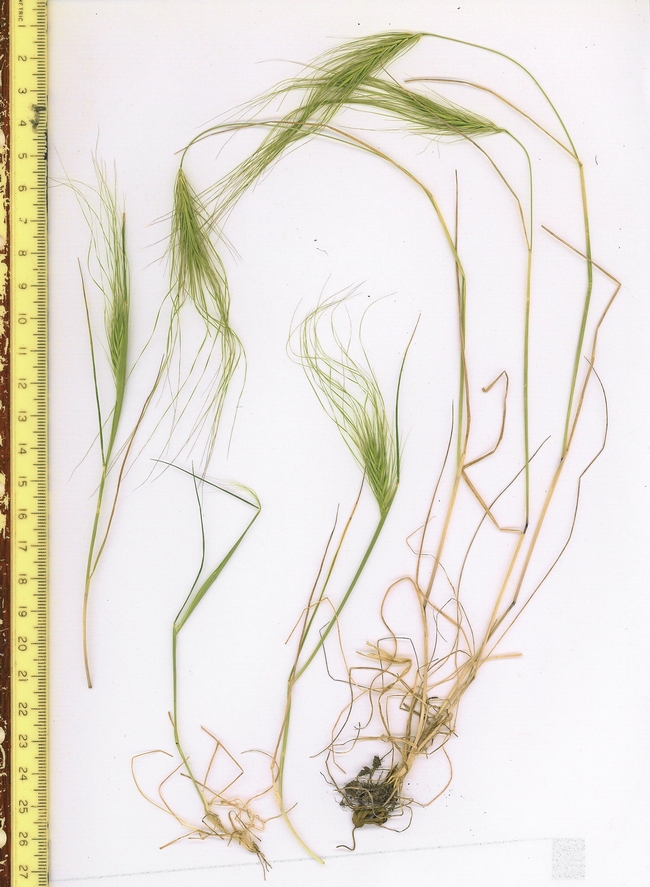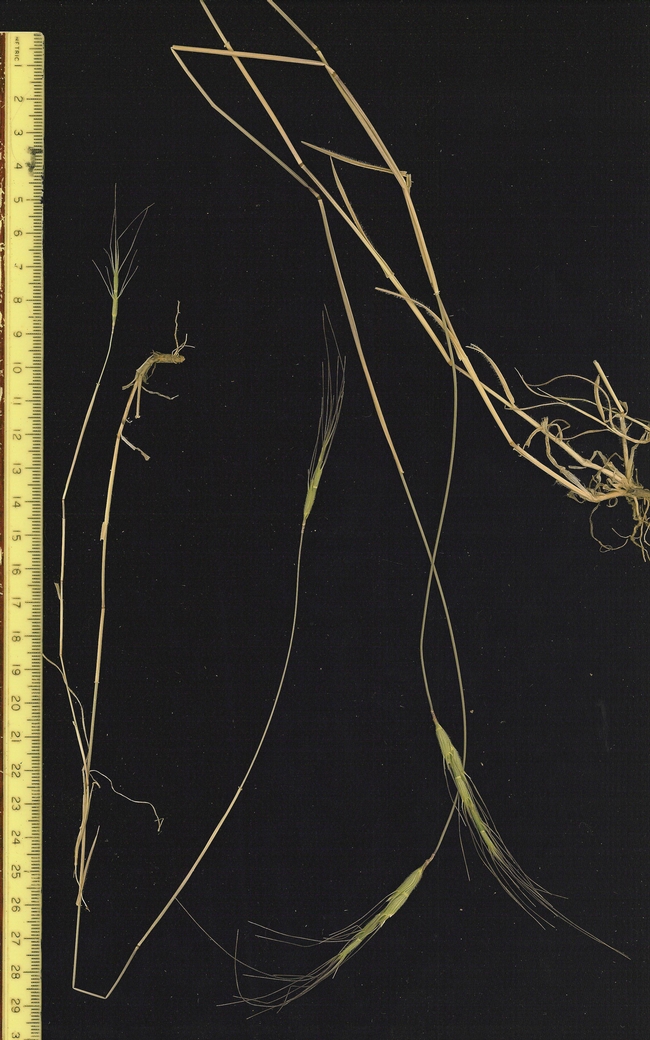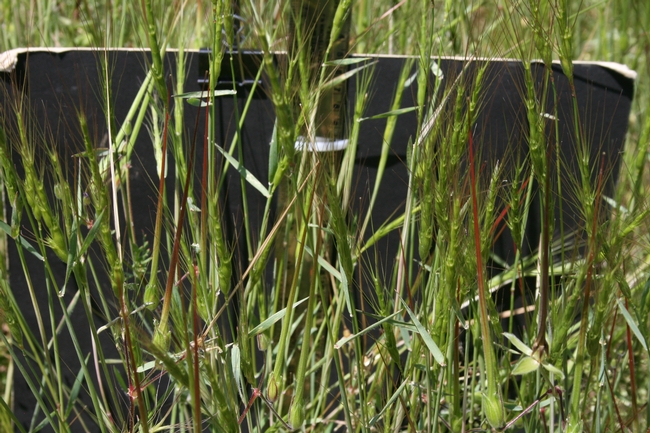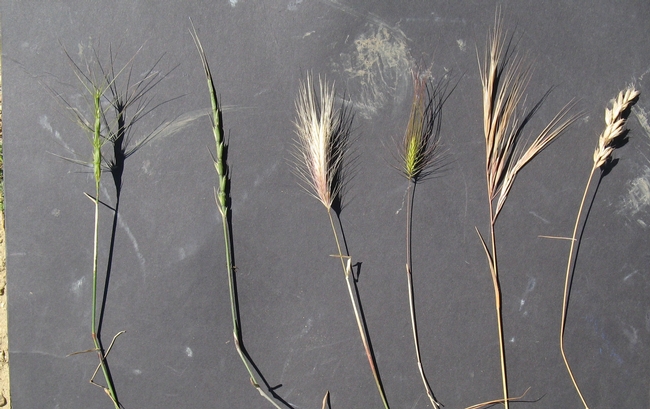
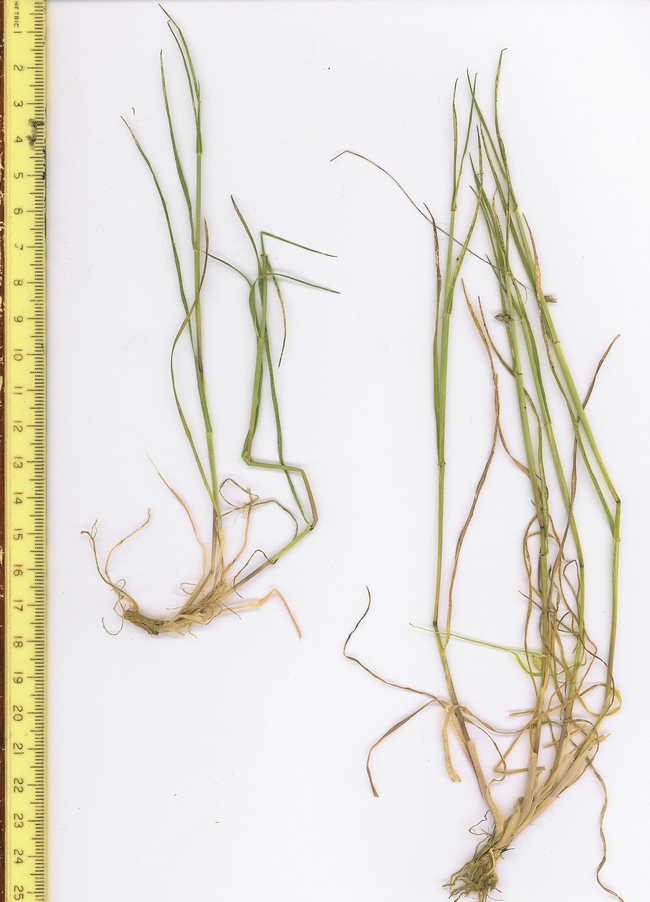
Over the last few years a team of UC researchers have explored the potential of using plant phenology to identify when targeted grazing or mowing can be applied to have the largest negative impact on medusahead and barb goatgrass. Phenology refers to the timing of biological events throughout the year and how they relate to climate and landscape. Medusahead and barb goatgrass are mostly typical of other annual grasses in California (Figure 1) in that they germinate after the start of the fall rains, grow through the winter (Figure 2), and then produce reproductive parts, flowers and seeds, in the spring. This research shows that if grazing or mowing are applied before the stem begins to elongate, the effect of these control treatments on seed production is minimal. Applying grazing or mowing treatments after the stem elongates but before the seed head emerges can decrease seed production by more than ten-fold.
Parts associated with the flower and seed head play a big role in why these noxious weeds are undesirable. Both of these grasses produce long, stiff awns that make them unpalatable to livestock (and produce discomfort to people and pets when they become stuck in our clothes). In addition, analysis shows that the nutritional content of these grasses falls below adequate levels as forage for cattle and sheep as they begin to produce flowers and awns (Figure 3). Once seed heads develop mowing or grazing will not prevent the seeds from becoming viable and germinating (Figure 4).
These observations on how the traits of medusahead and barb goatgrass change through the growing season have allowed us to define limits for when targeted grazing and mowing should begin and end. Once medusahead and barb goatgrass become susceptible to defoliation in the spring, there is a 2 to 3 week window during which targeted grazing can be used to treat medusahead (at stocking rates of 1 to 3 Animal Unit Month, or AUMs per acre, depending on the initial standing crop of forage) followed by a 5 week window during which mowing can be effective to treat either medusahead or barb goatgrass. More information on treating these two noxious weeds will soon be available in the UC ANR publication 8567, “Barb Goatgrass and Medusahead: Timing of Grazing and Mowing Treatments” that will be available on the SFREC website and through the ANR Catalog site.
